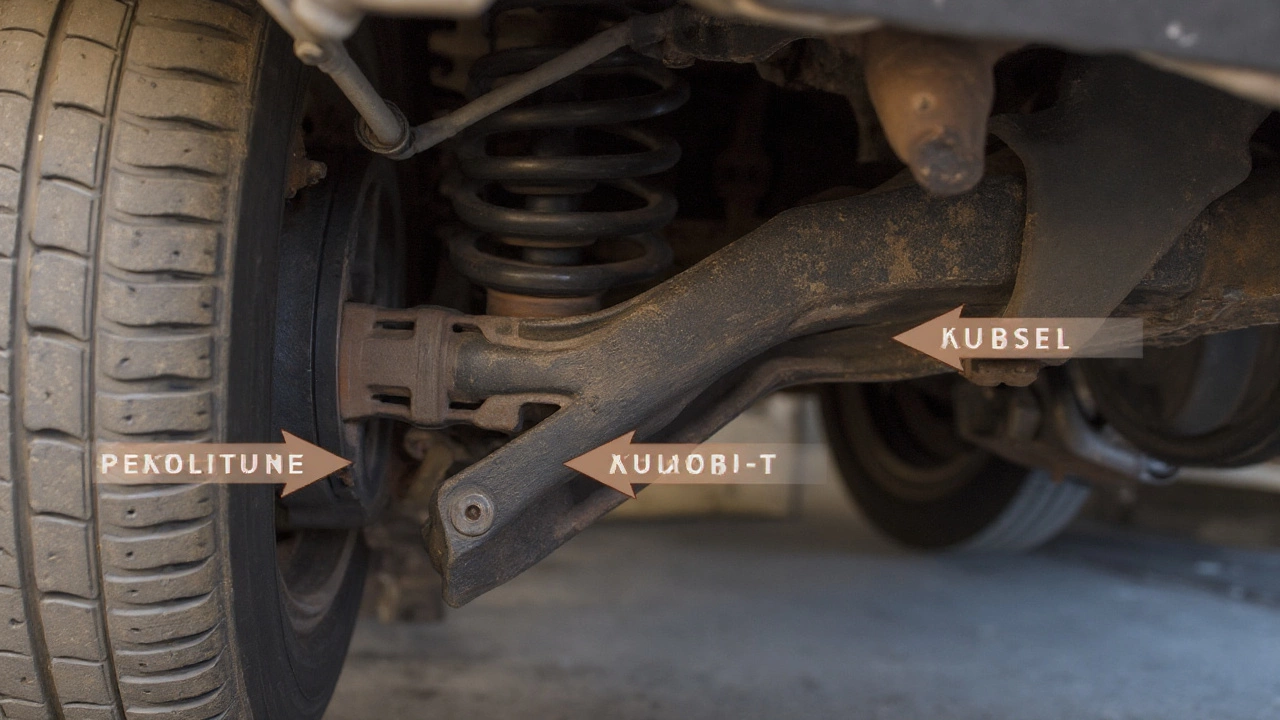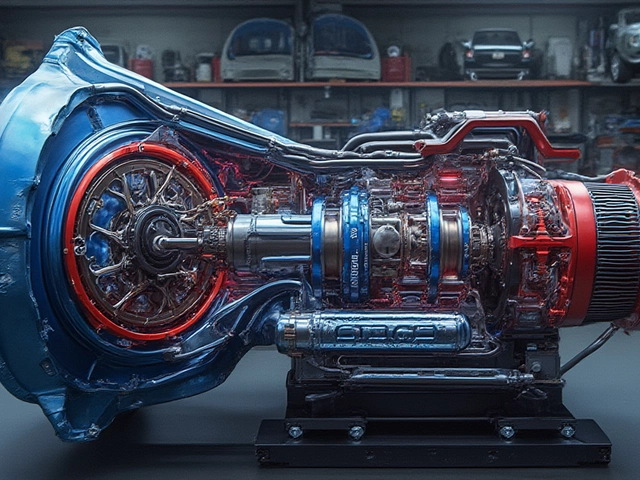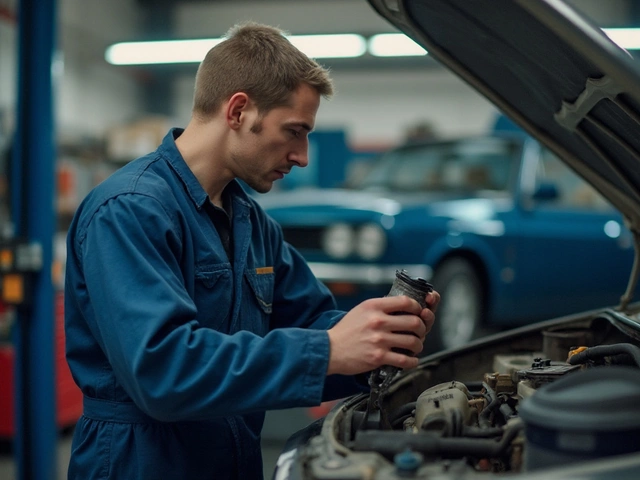Ever seen a car hobble down the street like it just got hit in the kneecaps? That wobbly, unpredictable movement is usually thanks to a bent suspension. Now, some folks shrug it off, thinking a little crookedness can’t be too harmful. But here's the shocker: one misaligned component in your suspension can send your whole car’s safety and handling down the drain. It isn’t just about your ride feeling weird. It impacts everything from tire wear to braking distances to how well you can steer around a kid darting into the road. If you’re thinking you can just tough it out until payday, there’s a lot you need to know.
What Really Happens When Your Suspension Gets Bent
First, let’s get a grip on what the suspension actually does. Your suspension system is made up of parts like control arms, struts, shock absorbers, sway bars, and ball joints. Their job? To keep your tires firmly on the road, absorb bumps, let your wheels move independently, and make sure your car handles turns without rolling over like a turtle. Every part is designed to take a beating from potholes, curbs, speed bumps, and rough roads. But when you hit something hard enough—like a pothole as deep as a frying pan or that concrete parking barrier you didn’t see—one or more parts can get bent or misaligned. Sometimes it’ll be obvious: the car pulls to one side, sits uneven, or the steering wheel gets crooked. Sometimes, though, the damage hides itself, quietly shredding your tires and making everything feel just a little off. And here’s a nugget nobody loves to admit: even a small bend in a major suspension arm can cause serious problems over time. The alignment gets thrown out of whack, which forces your tires to ride at weird angles, and your steering becomes flaky. Within weeks, tires wear unevenly, fuel efficiency tanks, and your brakes can take a vacation—responding slower than you’d expect. If you’re tossing kids, groceries, or even just yourself into that car, that’s not something you want to roll the dice on.
Let’s bust a myth while we’re here. Some folks think you’ll always "feel" it when your suspension is bent. In reality, unless the damage is bad enough to make noises or shake the whole car, you might not notice until your next tire replacement bill or when the car suddenly loses grip under braking. According to a 2022 insurance study, roughly 8% of crash claims involved underlying suspension damage—even though few drivers realized it before the accident. Car makers set tight limits for alignment and geometry for a reason; a few degrees of tilt can totally change your stopping distances and how much control you’ve got in a panic situation. So those little "quirks"—pulling to the side, steering not centered, the car "floating" over bumps—aren’t just character. They’re risk signals flashing red.
Maybe you’re thinking, okay, but what’s the worst that could actually happen? Besides chewed-up tires and the car being a chore to drive, a bent suspension can let vital parts rub, weaken, or snap over time. Imagine your control arm finally giving up at highway speed, or your tire blowing out from uneven wear while you’re making a sharp turn. It’s not an exaggeration: this stuff happens, and the aftermath can be ugly and expensive. Mechanics have seen everything from bent knuckles letting wheels move an inch further than designed, to sway bars shearing off, to struts popping out during a routine drive. And that’s before we even get into the fun of failed wheel bearings, unstable braking, or that infamous "death wobble" that makes you feel like you’re riding an out-of-control washing machine. So no, it’s definitely not just about comfort or cosmetics.

Spotting Bent Suspension—And What You Can Do About It
All right, if you’re wondering whether your car’s got bent suspension, the first step is to become a detective. Forget waiting for your mechanic’s next free appointment. There are practical steps you can do at home. Here’s what you should check:
- Visual Inspection: Park on something flat. Stand back and squint at the car. Does it sit level, or is one corner sagging like a tired old couch? Get up close and peek at each wheel—do they look straight, or is one tucked in or poking out?
- Tire Wear: Run your hand across each tire. Do you feel smooth rubber, or weird ridges and bald spots? Uneven wear patterns are a screaming sign something's off underneath.
- Steering Resistance: Take a slow, empty parking lot test. Does the wheel self-center after a gentle turn? If you let go briefly, does the car keep a straight line?
- Noises and Vibrations: Listen for clunks, creaks, groans, or a "whump-whump" sound over bumps. These can mean a part is not just bent but starting to fail.
- Ride Height: With a tape measure, check from the ground to the wheel arch at each corner. A variance of more than half an inch usually means trouble.
- Alignment Test: If you have a friend, watch from behind as you slowly drive away. Do your wheels point in odd directions?
If you spot even one of these issues, it’s time to call in a pro for a suspension alignment or a more detailed check. DIYers sometimes try to eyeball or "massage" a bend out themselves. Not recommended. These parts are thick forged steel or aluminum. If they’re bent, it takes a lot of force—and heating, hammering, or bending might just weaken them, making them more likely to snap next time.
As for temporary fixes, there aren’t really any safe ones. Sure, some car owners have wedged shims or cranked alignment bolts to "balance" the damage, but all that does is shift the stress somewhere else, risking a bigger failure. Suspension isn’t like body panels—a zip tie or duct tape won’t keep you safe, even just for a week. If you’re desperate to drive before repairs, keep trips short, avoid highways, and stay below 40 mph. But remember, even a "minor" bump can finish off a part that’s already on the edge, and your insurance may not cover you if you crash and they discover the pre-existing damage.
Got a modern car? Some new vehicles can flag major suspension issues through warning lights or error codes, especially if they have adaptive suspensions or lots of driver assist features. But don’t put blind faith in the dash. Older cars won’t say a word until there’s a catastrophic failure.
And don’t skip regular suspension checks. If you miss one curb or pothole too many, or if your car just survived even a low-speed accident, it’s worth asking for a post-impact suspension check at your next oil change. It might sound paranoid, but catching these problems early can save you a thousand bucks on tires, not to mention the cost of a fender bender that came out of the blue.

How Suspension Repair Works—and Why You Shouldn’t Wait
So let’s say the bad news hits: your mechanic says you’ve got a bent lower control arm, a twisted strut, or a spindle that’s just slightly "off." What does fixing it actually involve?
First, forget about "bending it back." Quality repair shops don’t try to reshape bent suspension bits. Once the metal has bent, it’s usually lost its original strength—even if you manage to hammer it straight, it might snap under the next hard bump. Repairs almost always mean replacement. The mechanic will source a new or quality-tested used part, then swap it out. For popular cars, these parts aren’t always as pricey as you’d expect—think around $100 to $300 for something like a control arm, or $150 to $500 for a strut assembly. Labor adds to the total, yes, but this isn’t a corner you want to cut. Older or rare cars might need a little more hunting for the right part, which ups the price.
Once the crooked part is out and the new one’s in, expect your shop to recommend a full alignment. This resets all four wheels to factory specs, which keeps handling sharp and tire wear even. Sometimes, they might find worn bushings, ball joints, or tie rods that also need replacing. It’s not upselling: after a big knock, connected parts can get battered even if they look okay at first glance. Ignoring these "minor" extras is like putting a brand-new shoe on a sprained foot—you’re setting yourself up for another, sooner breakdown.
This is also the moment when DIY repairs can go wrong. Installing suspension parts isn’t rocket science, but you need the right torque specs, new nuts and bolts (many are meant for one-time use), and a torque wrench. Skip these steps, or guess with old hardware, and you might make the next bump your last. Plus, some suspension components are under huge tension. A strut spring, when mishandled, can become a two-hundred-mile-per-hour projectile. So unless you’re an experienced wrencher with the correct tools and safety stands, this is best left to the pros.
Wondering about cost savings? Regularly checking and replacing worn or bent suspension parts actually saves you money in the long run. According to AAA, drivers who delay suspension repairs end up spending 2-3 times more thanks to extra tire replacement and follow-up repairs when other parts fail from the added stress. Don’t let tomorrow you be the one footing that bill for what looks like a simple "quirky" wheel tilt today.
Long story short, driving with a bent suspension is playing Russian roulette with your safety and your wallet. The smart move? Inspect your car if you notice anything off, don’t ignore the warning signs, and tackle repairs sooner—not later. Your car (and everyone riding with you) will thank you for it.






